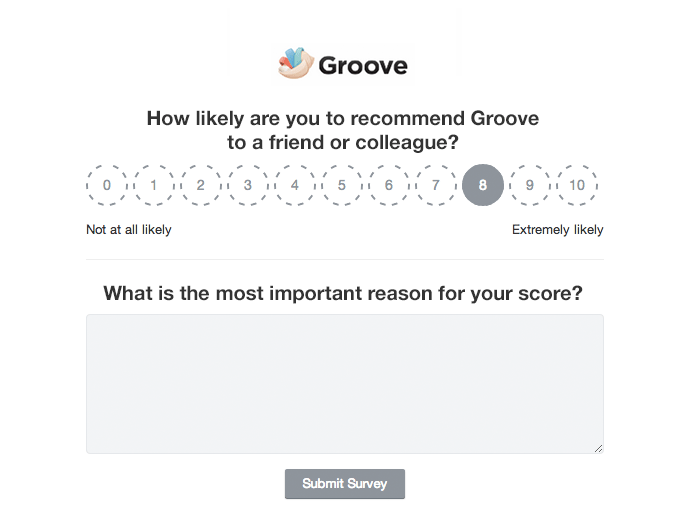What it Takes to Improve the SaaS Customer Experience

In 2011, Oracle’s Customer Experience Impact Report found that 86% of customers are willing to pay more for a better customer experience.
A similar American Express survey that year corroborated the Oracle study. AmEx found that people spend 13% more with companies who provide excellent service and happy customers tell about nine people about their positive experience.
This data tells us that how a customer experiences your product (its use and its results) is more important than what they pay for it. Your customers will gladly spend more money for more value, especially in B2B settings. Therefore, a better customer experience creates more predictable revenue.
There are a million gimmicky ways you can make customers happy. You might send a handwritten thank you note, take your customer out for dinner, offer a “close friends” discount, or send free hats, T-shirts or pens. Those tactics are fun and might introduce a blip of personality into an otherwise dry transaction, but they don’t build a solid customer experience.
When I say “build,” I mean it. Your customer experience isn’t something that happens. It’s a ride you create before customers get on.
Monitor customer sentiment and identify problems
You can’t fix a problem if you aren’t aware of it, so gauging customer sentiment is important. Calling every customer works when your customer roster is small, but it’s not feasible at scale. With Net Promoter Score surveys, you can turn qualitative data into quantitative data.
NPS surveys work like this: You install the survey right into your application so users are prompted while they’re using the app. An NPS survey has two questions: 1) On a scale of 1-10, how likely are you to recommend this tool to a friend, and 2) Why did you give that answer?

Image: groovehq.com
The first question is easily scored using the NPS scoring methodology. The second question gives insight into the first. The connection between them is important. “Sentiment adds important context to social conversations,” says Kate Dunham, marketer for Hootsuite. “Without it, measurement of mentions alone could be misleading.”
When you go through the answers to the second question, drop them into category buckets like “onboarding,” “UX design,” “technical problems,” or any other genres that apply to your business. Make sure to pay attention to users who complain about not seeing enough value.
Next, identify where most of the complaints are coming from. Are a disproportionate number of people complaining of web app lag? Focus on performance. Do they struggle with onboarding? Tweak your process.
This isn’t a perfect solution. You might want to award heavier weight to problems that are more likely to lead to churn. For instance, an inability to log into your application is a huge problem that should be addressed first, even if more people are complaining about something trivial like button colors.
You can also identify customer experience problems by turning to your data or monitoring outside sources. Check your usage and engagement rates. Which features are being accessed? Which are being ignored?
Set quarterly value milestones and actually deliver
Whether you do it at scale or sit down with each customer, it’s important to determine what each one considers value. How do they plan to use your SaaS to solve their problems? What will they consider a positive experience, and how do you get them to it?
A lot of SaaS customer success teams know to focus on value, but they make the mistake of blasting the client to that point as quickly as possible and then abandoning them (among other mistakes). A customer success manager will reach out a few times a year for an open-ended conversation and either get little information out of the customer or no response at all.
Instead, you should implement a structured annual lifecycle for your customers with quarterly business reviews. Each quarter, approach the client with documented evidence of their success with your product.
If you sold an email marketing tool, you could share how many campaigns they’ve sent and their success rates (even better if you had real ROI numbers, like how much money your SaaS helped them obtain).
This documentation reinforces the value your tool has provided. It reminds the client that you are part of their business, not an expense to be cut. It also turns you into a partner, not a pest.
Next, your review should suggest some goals for the next quarter. When you present the review to your customer, he/she may make some changes, but that’s fine. Your goal recommendations are a great way to open a dialogue about how you (the customer success manager) can add value to their business. These recurring goals mean you and the customer will always have a reason to talk.
Finally, you have to actually work with the customer and other teams within your organization to make those goals possible. Perhaps the customer’s goals require a tweak to the API or an extra bit of data on your usual report. You can maximize the customer’s experience by pushing toward their goals without making them feel overwhelmed.
Create solutions that can be applied to all customers
When you are in firefighting mode (as many customer success managers operate), you tend to solve one-off problems. Customer A needs X, so you provide it. Customer B needs Y, so you provide it.
Once you get your team out of the reactionary mode and have discovered the root causes of customer problems (by tracking sentiment, like I mentioned above), you can create packaged solutions that apply to every customer (or groups of customers). In many cases, your solutions can be implemented SaaS-wide in a way that prevents the problem from ever creeping up.
The only way to do that is to adequately map the customer journey. For each segment of your customers, create a roadmap of growth. List typical problems the customer will face and how you can have solutions ready to address them. This will reveal gaps in interactions with your customers that are potential opportunities to add value to their business and improve the customer experience.

Image: adobe.com
You probably have some type of map that starts with the customer’s awareness of a problem and ends when they decide to purchase your product. This is only the marketing piece of your customer journey. A proper journey map takes the customer through renewals and upsells.
Your onboarding process should be just one part of the customer journey. Mapping your onboarding is an excellent way to solve potential problems at scale before they occur. Isolate where and why your customers are having problems and solve them before they impede the customer experience.
Your customer journey map should also highlight potential opportunities for renewals and expansions. For example, you might notice that a customer in one of your segments is likely to grow into a phase that puts them under stricter government regulations. You might use that opportunity to upsell them on a feature that certifies their compliance.
A clearly defined customer journey (with some expected variation – even some forks are possible) will help meet your customer’s expectations. Every time you deliver a Quarterly Business Review, check it against the customer journey. Recommend goals that align with the customer’s expected path. This will make your customer feel like they have a personal relationship with you, even if you only speak with one another a few times a year.
Final thoughts
The key to creating the best customer experience is planning it, not reacting to it. The experience should be tailored from the moment the customer lands on your website, free trials, all the way through renewals, expansions and beyond. You should be in control of the journey.
Part of that means selling to the right people. If a would-be customer doesn’t fit into your customer journey and may experience problems you aren’t ready to solve, they’re probably a poor fit for your business. It’s smarter to abandon a sale rather than sell to someone who is likely to churn quickly.
If you need help creating a powerful and value-rich customer experience, contact us.
